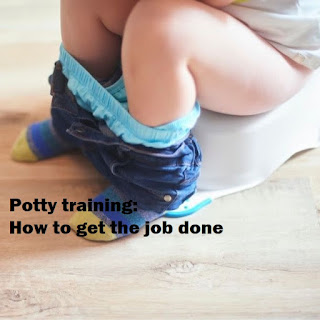Potty training is a significant milestone in a child's development, marking their transition from diapers to using the toilet independently. This journey can be filled with excitement, frustration, and everything in between, both for parents and toddlers alike.
Signs Your Child is Ready:
Before embarking on the potty training adventure, it's important to ensure your child exhibits signs of readiness. These indicators include:
- Physical Signs: Your child can pull up and down their pants independently, remain dry for several hours, and show awareness of urination and bowel movements.
- Behavioral Signs: Your child expresses interest in using the potty, imitates others using the bathroom, or shows discomfort in wet diapers.
- Developmental Signs: Your child understands and follows simple instructions, communicates their needs effectively, and exhibits increased independence in other areas.
Creating a Positive Potty Training Experience:
Once your child shows several readiness signs, it's time to set the stage for success. Here are some tips:
1. Establish a Routine: Create a predictable schedule for potty breaks, incorporating them after waking up, before meals, and before bedtime. Consistency helps your child develop bladder and bowel control.
2. Choose the Right Equipment: Invest in a comfortable potty or training seat that fits your child's size and preferences. Allow them to choose colorful underwear or training pants to add excitement.
3. Make it Fun and Positive: Use positive reinforcement, praise their efforts, and celebrate successes with cheers and high fives. Avoid shaming or scolding accidents, as this can create negative associations and hinder progress.
4. Encourage Independence: Guide your child through the steps of using the potty, but allow them to take ownership of the process. This fosters a sense of accomplishment and builds their confidence.
5. Be Patient and Consistent: Potty training takes time, and progress may be slow and inconsistent. Be patient, remain positive, and avoid comparing your child's progress to others.
Common Challenges and Solutions:
Potty training hiccups are inevitable. Here's how to handle them calmly:
1. Accidents: Accidents are normal, especially during the initial stages. Instead of getting upset, offer comfort and reassurance. Clean up calmly and encourage your child to try again.
2. Regression: Sometimes, children experience setbacks due to stress, illness, or developmental changes. Be patient, offer extra support, and stick to your established routine.
3. Fear of the Toilet: Some children may be afraid of the flushing sound or the unfamiliar sensation of the toilet. Introduce them gradually, allow them to flush the toilet themselves, and provide reassurance.
Potty Training Resources:
Here are some additional resources to support your potty training journey:
- Books: "Oh Crap! Potty Training: Everything Modern Parents Need to Know" by Jamie Glowacki, "The Potty Book" by Alyssa Satin Capucilli.
- Websites: The National Institute of Child Health & Human Development, Zero to Three.
- Support Groups: Online forums and local parenting groups can connect you with other parents and professionals for advice and encouragement.
Remember: Potty training is a unique journey for each child. It's essential to be patient, consistent, and positive to help your child achieve this important milestone. Embrace the journey with love, laughter, and understanding, and celebrate each success along the way.



No comments:
Post a Comment